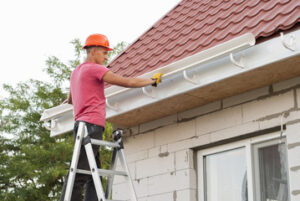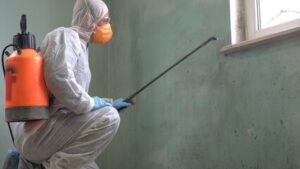Landscapes add value to homes and reduce the time a home spends on the market. They also provide environmental benefits like reducing energy costs and carbon dioxide levels.

Stafford VA Landscaping encompasses both hardscaping, such as walkways and retaining walls, and softscaping, such as plants. Careful planning and installation creates a balanced, aesthetically pleasing environment.
One of the most important aspects of landscaping is planting. This is what gives your property its character and color, and it also contributes to the overall health of your yard. It’s important to choose plants that are appropriate for the climate and soil conditions where you live, as well as ones that will thrive in the sun and shade exposures of your landscape.
When choosing plants, consider their size and shape, as well as their blooming period. This will help you create a balanced garden that provides year-round interest. You can also incorporate focal points into your design to draw the eye toward specific features of your yard, such as a garden bench, bird bath, or sculpture.
Another way to add interest to your landscape is by installing hardscapes, which are features like pathways and patios that add function and value to your outdoor space. Landscaping services can construct these elements with ease and skill, using a wide variety of materials to complement your home’s architecture and suit your personal taste.
A landscaped garden can also increase your home’s value and boost curb appeal. This is because it shows potential buyers that your property has been well cared for, which can lead to a quick sale. Plus, research has shown that spending time in a beautiful garden can improve mental and physical health.
Landscaping can also help to reduce your energy costs. For example, dense trees and shrubs can provide natural insulation, keeping your house cool in the summer and slowing down heat loss during the winter. In addition, using native plants and grasses can minimize the need for fertilizers and herbicides, which can help protect the environment.
Before beginning any landscaping project, it’s important to map out where you’ll be digging with chalk or twine and call 811. This national hotline will mark the location of any underground utilities so that you don’t damage them accidentally. It’s also important to follow safety guidelines, such as wearing gloves when working with heavy equipment or digging in wet areas. In addition, be sure to water your new plants often enough to keep them healthy and thriving.
Hardscaping
Hardscaping is the non-living part of landscape design, referring to structures made from man-made materials like patios, walkways, and retaining walls. It’s a critical element of a well-designed yard, adding structure and defining different areas in your garden. The right hardscaping features can transform your outdoor space into a functional, relaxing and beautiful retreat.
Often, the best hardscaping options are those that blend with your existing plants and greenery, rather than detracting from them. Concrete, brick, pavers, wood and stone all offer durable, attractive solutions for hardscaping. When choosing a material, consider its color and texture to ensure it complements the surrounding vegetation. Concrete offers the benefit of a wide range of color and texture options, from smooth and polished to rough and weathered. Brick is a classic option for its durability and variety of colors and textures, while stones offer more visual diversity with their size, shape, color and finish.
The scale of your hardscape should be proportional to the size of your yard and home. Larger yards can accommodate more elaborate elements, such as a large patio or an expansive water feature, while smaller gardens may only need a small pathway. Also, think about how your new hardscape will impact your property’s drainage. Will it help manage stormwater runoff, preventing flooding and soil erosion? Or will it create problems with water flow, damaging your landscaping and causing foundation issues?
While hardscaping isn’t as important as planting, it’s still an essential component of a healthy garden. It defines different zones in your garden, creating spaces for different activities and reducing wear and tear on your grass and other plants.
Patios, pathways and retaining walls also make your garden more livable by providing a dedicated area for entertaining and relaxation. Unlike lawns, which require regular maintenance and can be damaged by harsh weather conditions, hardscaping is low-maintenance and long-lasting. It also adds value to your home, with potential buyers seeing the benefits of a well-maintained outdoor space.
Lighting
A well-designed landscape lighting scheme adds visual appeal and ambiance to outdoor spaces while also ensuring safety and visibility. Lighting can highlight specific architectural features and accentuate natural textures, creating a sense of depth that draws the eye through space. Moreover, it can cultivate a cohesive, multi-dimensional aesthetic that increases property value and invites guests to engage with a space.
When implemented effectively, landscape lighting elevates the quality of home life while boosting curb appeal and enhancing security. Achieving this balance between beauty and function requires careful planning and design, as well as high-quality fixtures that can withstand the elements and last long.
Lighting can make water features, statues, and other focal points stand out at night, bringing them to life with subtle shadowing effects. Other techniques, such as uplighting and silhouetting, emphasize the shape and form of a particular feature, adding drama and beauty to the landscape. Lighting can illuminate pathways, eliminating potential hazards and promoting a safe environment for guests to move around a property at night.
Providing sufficient light to outdoor spaces also increases usable space, inviting homeowners and guests to spend more time outdoors throughout the year. It can also deter criminals, as well-lit exteriors make it more difficult for thieves to hide. In addition, the use of motion sensors that activate lights when a person approaches the property can enhance security by deterring criminal activity from happening in the first place.
In addition to enhancing the ambiance of your landscape, thoughtfully designed lighting can extend the life of outdoor spaces into the evening, making them ideal for relaxing after work or entertaining friends and family. It can even transform unused areas into functional gathering spaces, where the right lights can set the tone for intimate dinner parties or family BBQs. A professional landscaper will consider the functionality of a space, ensuring that all aspects are properly lit to meet your unique needs and ensure your satisfaction with the final product. They can also incorporate energy-efficient options that prioritize sustainability and reduce energy costs over time. In doing so, they will help you create a sustainable and eco-friendly landscape that is both attractive and practical.
Maintenance
Landscaping is both art and science, transforming bare land into beautiful and functional outdoor spaces. It combines hardscaping elements like patios and walkways with softscaping like gardens, lawns and trees. The result is a balanced and aesthetically pleasing environment that can boost your property value and curb appeal. Choosing the right landscaping construction company is critical to ensure your project goes smoothly from start to finish.
Hardscaping refers to the non-living components of your yard, including structures like decks, patios, walkways and retaining walls. The experts know how to blend these elements with the natural beauty of your garden to create a cohesive and visually appealing design. They use quality materials like concrete, brick and stone to create durable and long-lasting hardscaping elements.
In addition to building hardscaping elements, it offers a full range of maintenance services to keep your property looking its best. This includes mowing, fertilization and weed control to keep your grass healthy and vibrant. It also includes edging, mulching, and tree trimming to keep your greenery neat and tidy.
Landscape maintenance and lawn care are often confused with one another, but there are some key differences. While both involve caring for the plants in your yard, landscaping is a bit more involved and can include things like water features, rock gardens and outdoor structures like pergolas and gazebos. Landscaping can also alter the terrain of your yard by grading and leveling to improve drainage, usability and aesthetics.
Landscaping can be a time-consuming and challenging process, but the results are worth it. The right landscaping construction company can help you achieve your ideal outdoor space and make it easy to maintain. With a little effort, you can enjoy your beautiful landscape year-round.








